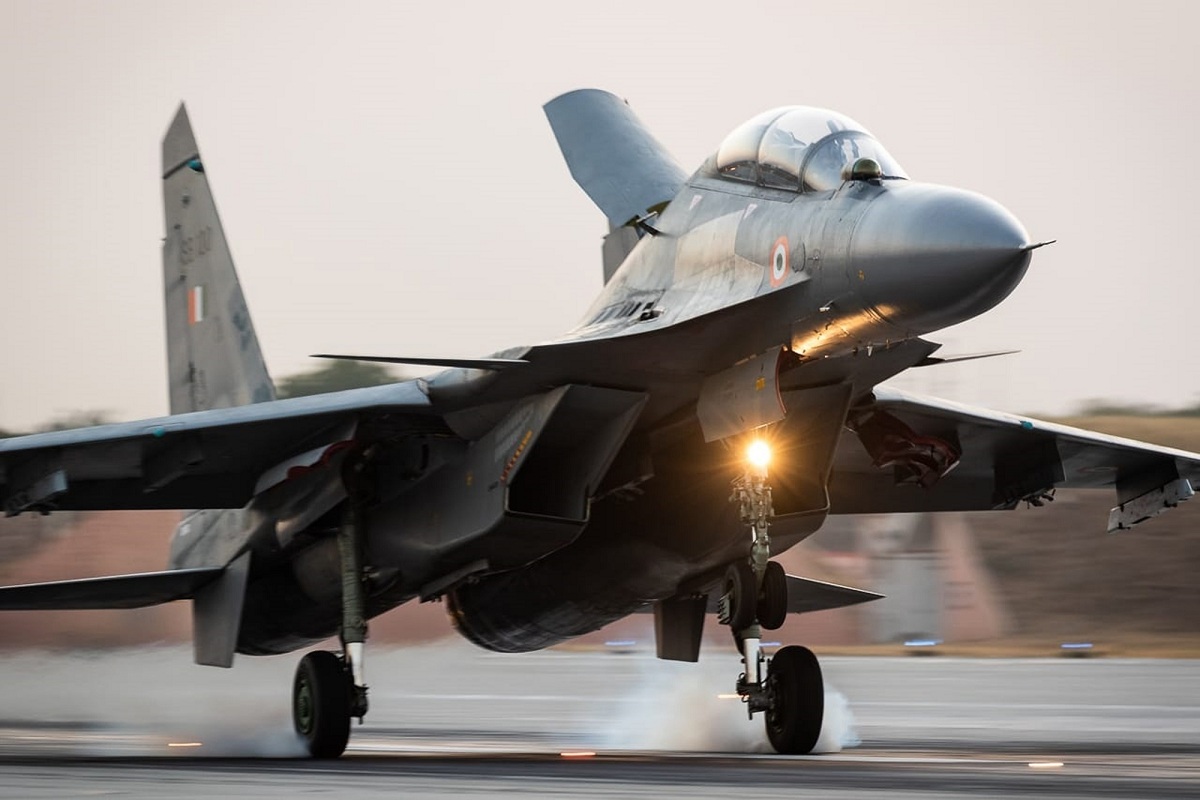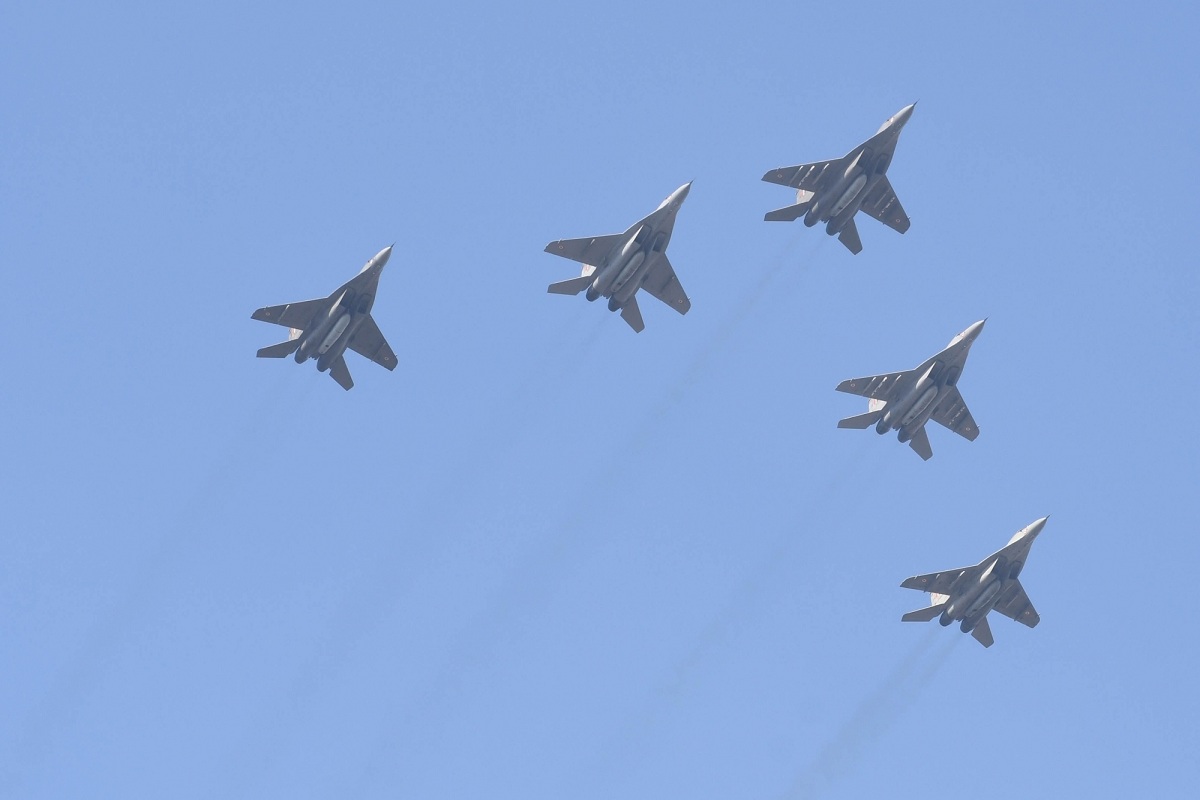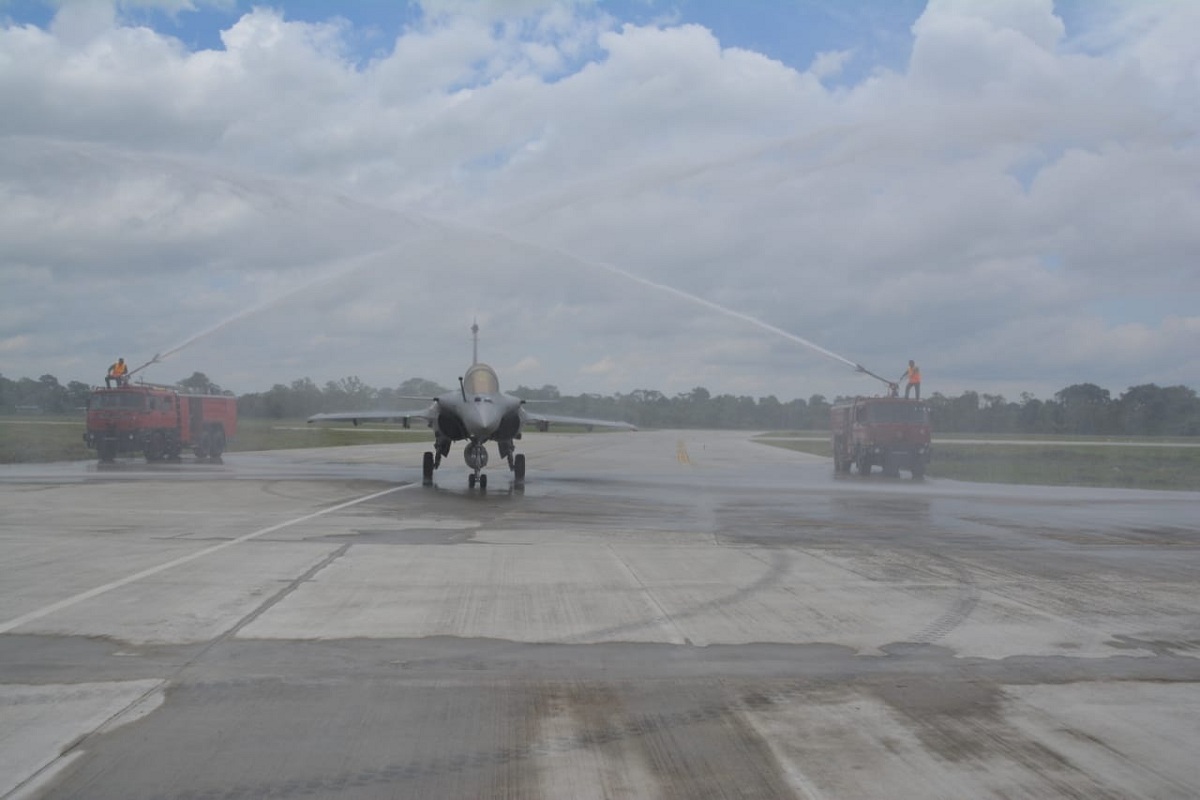Springdales DK felicitates alumni on selection for Gaganyaan mission
Indian Air Force Group Captain Angad Pratap has been selected by the government for the mission as one of the four astronauts.
India currently has 1,645 aircraft in its inventory, divided among attack, logistical, special-mission, and general support types.

(Photo: Angad Singh/IAF/IANS)
The Guardians of the Skies, i.e the Indian Air Force (IAF) honoured its 90 years of excellence in services as it celebrated the Airforce Day on Saturday.
Since its inception in 1932 and till 1947, the Indian Air Force acted as the Royal Indian Air Force before being divided between the new states of independent India and Pakistan after the partition in August 1947. Subroto Mukherjee became the first chief of Air Staff’ in 1954.
To protect India’s frontiers from external attack, the Indian Air Force mostly uses fighter aircraft “the crown jewels of IAF.”
Advertisement
India currently has 1,645 aircraft in its inventory, divided among attack, logistical, special-mission, and general support types.
India is ranked 6th among 124 nations in the Global Air Powers rankings, according to WDMMA, with a TvR rating of 69.4.
As of now the inventory of the Indian Air Force includes a wide variety of fighter aircraft. Mirage-2000, Rafael, Jaguar, MiG-29, MiG-21, Sukhoi-30 MKI, and Tejas are some noticeable fighter aircraft.
Tejas– India Hindustan Aeronautics Limited produced the lightweight fighter jet known as Tejas (HAL). Defense Research Development Organization (DRDO), Aeronautical Development Agency designed the aircraft (ADA).
The Tejas – Light Combat Aircraft (LCA) programme was designed to take the place of the Indian Air Force’s Russian MiG-21 fighters. It has a top speed of 1,980 km/h, with payload of 5,300Kg.

Tejas is a multipurpose fighter with a single engine, which can carry a variety of projectiles in its 8 hardpoints.
In 2003, Tejas was given to the LCA programme. In Sulur, Tamil Nadu, the Indian Air Force (IAF) have two squadrons of Tejas Mk .
Mirage 2000- The Mirage 2000C is a highly nimble and swift aircraft that is propelled by a SNECMA M53-P2 afterburning turbofan engine and purposefully aerodynamically unstable. It has a top speed of 600 knots at sea level and a top speed of Mach 2.2 at high altitudes.

The Mirage 2000 has “zero speed, zero altitude” ejection seats, which enable the pilots to jump out of the plane even when it is stationary and on the ground. The IAF’s fleet of Mirage 2000 aircraft is being upgraded by HAL with modern electronics and armament.
The mainstay of the Indian army from the Kargil War to the 2019 Balakot airstrikes, where they struck a Jaish e Mohammed terrorist base in Pakistan, the Mirages have been in service since the 1980s.
In the Kargil war, the Mirages also successfully destroyed Pakistan Army barracks and bunkers on the Tiger Hilltop, changing the course of the conflict by employing laser-guided bombs to precisely attack enemy installations at such great heights.
Sukhoi-30 MKI– Sukhoi Aviation Corporation produces the twin-engine Sukhoi 30 fighter jet. The Sukhoi 30 MkI, one of numerous Sukhoi-30 versions, is the model flown by the Indian Air Force.
Its engine is powereed by Snecma M88-2 which can produce max speed of Mach 1.8 and it can eaisly cover 1850 km of range in combat situation.

Algeria, China, Vietnam, Venezuela, and Malaysia are some of the other countries that deploy Sukhoi-30 aircraft in addition to the Russian and Indian Air Forces.
The Sukhoi 30 MKI serves as the Indian Air Force’s foundation. India operated about 260 Sukhoi 30 MKI fighter aircraft as of January 2020. India intends to purchase additional Sukhoi 30 MKI aircraft, principally to replace any lost in accidents.
Jaguar- In 1978, the Indian Air Force signed a $1 billion deal with Hindustan Aeronautics Limited for the purchase of 40 Jaguars and a licence to manufacture 120 Jaguar aircraft under the local name Shamsher.
Jaguar is a twin-engine ground-attack aircraft that was created and developed by the British Aircraft Corporation and Breguet of France (BAC). India placed a total of 116 orders for jaguars. The Indian Air Force (IAF) is currently using the aircraft, and it is anticipated that it will continue to do so until 2034.

Two Adour Mk 102 turbofan engines, each with a dry thrust rating of 22.75 kN, are used to power the Jaguar. In 1968, Rolls-Royce of the UK and Turbomeca of France collaborated on the design and construction of the engine. It is a two-shaft engine that produces 32.5kN of afterburner thrust.
A Jaguar can fly at a top speed of 1,699 kilometres per hour. The aircraft’s fighting radius and ferry range are 908 km and 3,524 km, respectively. The ceiling for services is 14,000m.
Rafael- Dassault Aviation of France produces the twin-engine Rafale. The French Air Force is the main user of it, this aircraft is also pwered by a Snecma M88-2 engine.
A contract for 36 Rafale fighter jets was done, and the Indian Air Force will fly them. A bundle of replacement parts and weaponry, including the highly regarded Meteor Beyond Visual Range Air to Air Missile, are included in the 2016 agreement (BVRAAM).

In combat operations in Afghanistan, Iraq, Syria, Libya, and Mali, Rafale fighter jets were utilised.
Rafael can reach a maximum speed of mach 1.8 and has 14 hardpoints which can carry multiple bombs and misssiles in those 14 hardpoints with a covering range of 3000 Km.
Mig- 21- The Soviet Union produced the Mikoyan-Gurevich 21 (MiG-21), which made its maiden flight on June 16, 1955. In 1963, India purchased the MiG-21 as it was preparing to expand its military capabilities in response to China’s victory in the Sino-Indian War of 1962 and the mounting pressure from Pakistan.
874 MiG-21s were inducted into the IAF over the ensuing 25 years. Of these, Hindustan Aeronautics Limited constructed 657. (HAL). Currently, the IAF has about 70 MiG-21s. For a while, the IAF relied heavily on its MiG-21 fleet. The plane, however, has recently had an extremely bad safety record.

But According to data from the Ministry of Defence, over 400 MiG-21s have crashed in the last 60 years, killing over 170 pilots. The aircraft has acquired ominous nicknames like “flying coffin” and “widowmaker” as a result.
According to those acquainted with the situation, the Indian Air Force, or IAF, has established a three-year time-frame to phase out the remaining four MiG-21 fighter squadrons, with one of them scheduled to withdraw from duty in September.
Advertisement